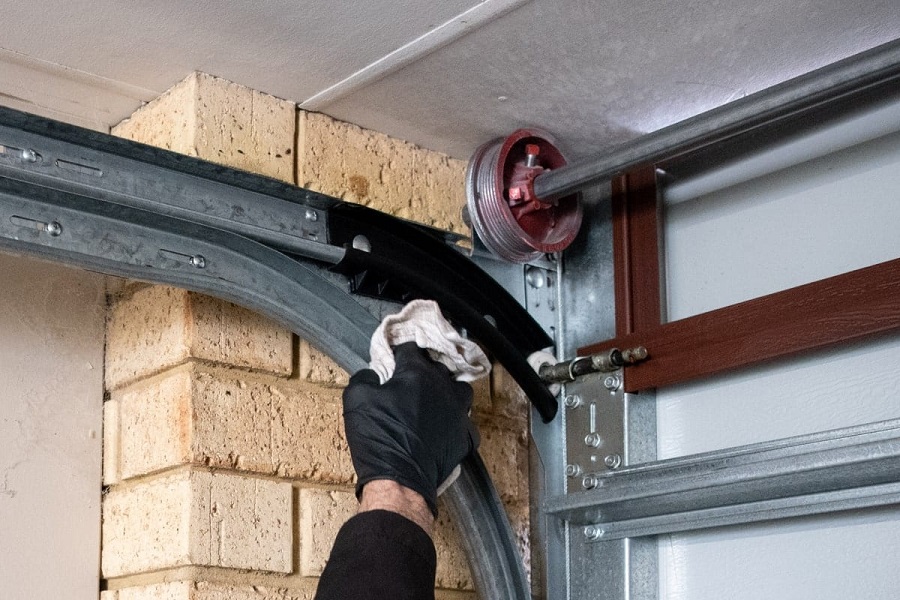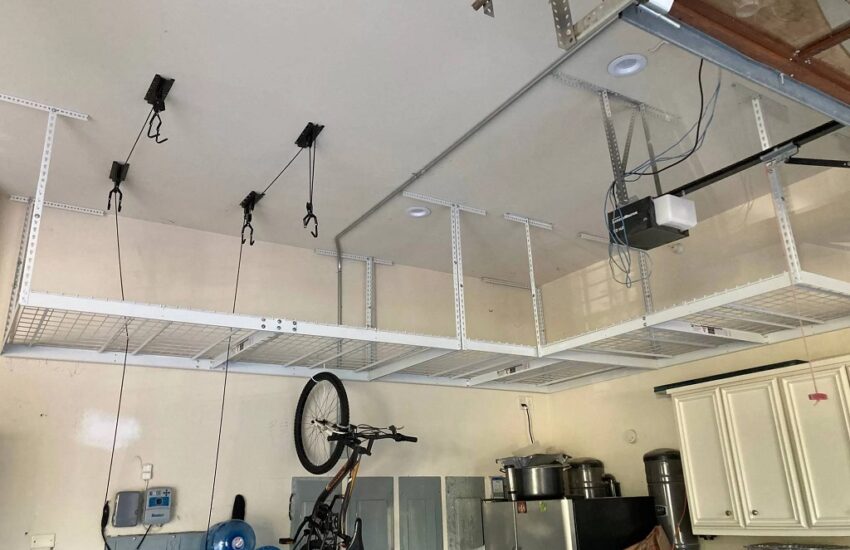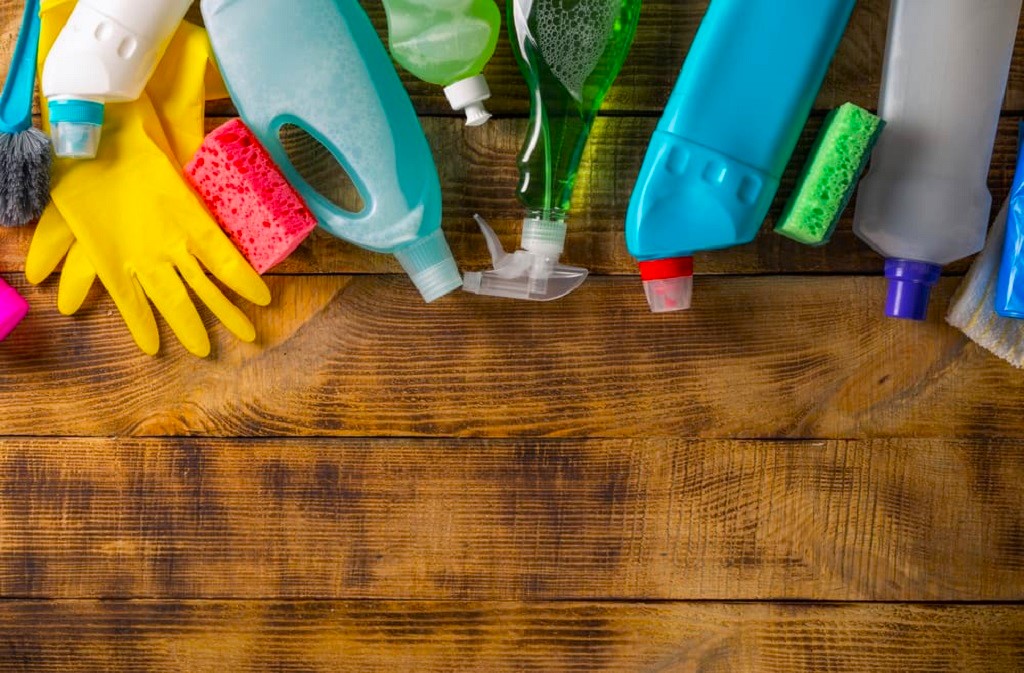Your garage door is essential to your home’s security and convenience. It’s important to maintain all garage door system components, including the springs, properly. In this article, we will guide you through some DIY garage door spring maintenance tricks to help you keep your garage door functioning smoothly and extend its lifespan.
When maintaining your garage door, the garage beams and springs play a crucial role. Garage door springs support the door’s weight, making it easy to open and close. Over time, these springs can wear out or become damaged, leading to issues with the door’s operation. Regular maintenance can prevent costly repairs and potential accidents.

Importance of Garage Door Spring Maintenance
Proper garage door spring maintenance is essential for several reasons. Firstly, it ensures the door operates smoothly without any jerking or noises. Secondly, it prolongs the lifespan of the springs, saving you from premature replacements. Lastly, it enhances the safety of your garage by reducing the risk of a sudden spring failure, which can cause accidents or property damage.
Maintenance is essential to ensure the smooth operation and longevity of your garage door system. Here are the reasons why maintaining your garage door springs is important:
- Safety: Garage door springs are under high tension and can be dangerous if they break or malfunction. Regular maintenance helps identify signs of wear or damage, reducing the risk of sudden spring failure.
- Prevent Costly Repairs: Regularly inspecting and maintaining your garage door springs can catch minor issues before they escalate into major problems. This can save you from costly repairs or even the need for a complete spring replacement.
- Extend Spring Lifespan: Regular maintenance, such as lubrication and cleaning, can help prolong the lifespan of your garage door springs. This ensures that they operate smoothly and reduces the chances of premature failure.
- Smooth Operation: Well-maintained springs contribute to your garage door’s smooth and efficient operation. They provide the necessary tension and support to help open and close the door without strain.
- Preserve Other Garage Door Components: When garage door springs are properly maintained, they reduce the strain on other components, such as the opener motor, cables, and tracks. This extends the lifespan of these parts and reduces the likelihood of their failure.
Signs of Spring Wear and Tear
Before you dive into maintenance, it’s crucial to identify signs of wear and tear in your garage door springs. Some common signs include:
- Squeaking or grinding noises
- Uneven movement of the door
- Difficulty in opening or closing
- Gaps or misalignment in the springs
- Rust or corrosion on the springs
If you notice any of these signs, it’s time to perform maintenance or seek professional assistance if needed.
Tools Required for DIY Garage Door Spring Maintenance
To perform DIY door spring care, you’ll need the following tools:
- Safety goggles
- Work gloves
- Adjustable wrench
- Lubricant spray
- Cleaning cloth
- Stepladder
- Replacement springs (if necessary)
Having these tools readily available will make the maintenance process easier and safer.
Safety Precautions
Before starting any maintenance work, it’s crucial to prioritize safety. Remember to:
- Disconnect the power to the garage door opener.
- Put on safety goggles and work gloves to protect yourself from debris and potential injuries.
- Use a stable stepladder or platform to reach the springs safely.
- Ensure the door is fully closed before working on the springs.
- Avoid attempting any repairs or adjustments beyond your skill level. If unsure, consult a professional.
Step-by-Step Guide to Garage Door Spring Maintenance
Follow these steps to perform DIY garage door spring care:
Inspecting the Springs
Start by visually inspecting the springs for any signs of wear, damage, or misalignment. Look for rust, cracks, gaps, or signs of excessive tension. If you notice any issues, proceed with the necessary repairs or replacements.
Cleaning and Lubricating the Springs
Wipe off any dirt or debris from the springs using a cleaning cloth. Apply a lubricant spray designed for garage door springs, coating them thoroughly. Lubrication helps reduce friction and ensures smooth operation.
Adjusting Tension
Use an adjustable wrench to increase or decrease the tension if your garage door springs are adjustable. Follow the manufacturer’s instructions carefully, as overtightening or under tightening the springs can cause operational problems.
Replacing Damaged Springs
If your springs are severely damaged or worn out, they may need to be replaced. Refer to your garage door’s manual or consult a professional for guidance on safely removing and installing new springs. Spring replacement can be dangerous, so exercise caution or seek expert help.
Common Mistakes to Avoid
When performing door spring upkeep, be aware of these common mistakes:
- Attempting repairs beyond your expertise
- Failing to disconnect the power before working on the springs
- Neglecting to wear safety goggles and work gloves
- Using improper tools or parts for repairs
- Ignoring signs of significant wear or damage
Avoiding these mistakes will help ensure your safety and the effectiveness of the maintenance work.
Frequency of Garage Door Spring Maintenance
Regular maintenance is necessary to keep your garage door springs in optimal condition. Performing maintenance tasks at least twice a year is recommended, ideally during the spring and fall seasons. However, if you notice any issues in between, don’t hesitate to address them promptly. Here are some general guidelines:
- Annual Inspection: It is recommended to have a professional inspect your garage door springs at least once a year. They can check for signs of wear, damage, or any other issues requiring maintenance or replacement.
- Regular Lubrication: Garage door springs should be lubricated every three to six months or as needed. Applying a silicone-based lubricant to the springs helps reduce friction and ensures smooth operation.
- Visual Inspection: Perform a visual inspection of your garage door springs every month. Look for any signs of rust, wear, or damage, such as gaps, cracks, or elongation. If you notice any abnormalities, contact a professional for further evaluation.
- Pay Attention to Changes: If you observe any changes in the operation of your garage door, such as excessive noise, imbalance, or difficulty in opening or closing, it’s essential to address them promptly. These could be signs of spring issues that require maintenance.
- Environmental Factors: If you live in an area with extreme temperature fluctuations, high humidity, or corrosive conditions, you may need more frequent maintenance. These conditions can accelerate wear and require closer attention to the springs.
Remember that garage door springs are under high tension and can be dangerous to handle. Hiring a trained professional for garage door spring maintenance or repairs is recommended. They have the expertise and tools to safely inspect, maintain, or replace the springs as needed.
Benefits of Regular Maintenance
Regular garage door spring maintenance offers numerous benefits, including:
- Extending the lifespan of the springs
- Improving the overall performance of the garage door
- Minimizing the risk of sudden spring failure
- Reducing the need for costly repairs
- Enhancing the safety and security of your garage
Investing time in regular maintenance pays off in the long run by saving you money and ensuring smooth garage door operation.
Conclusion
Maintaining your garage door springs is essential for your garage door system’s overall performance, safety, and longevity. By following the DIY garage door spring maintenance tricks outlined in this article, you can keep your springs in excellent condition and avoid potential issues. Remember to prioritize safety, follow the manufacturer’s instructions, and seek professional help when necessary.
FAQs
Q1: Can I perform garage door spring maintenance without prior experience?
Absolutely! The maintenance tasks outlined in this article are suitable for homeowners with basic DIY skills. However, if you’re unsure or uncomfortable with the process, it’s always wise to consult a professional.
Q2: How often should I lubricate my garage door springs?
It’s recommended to lubricate your garage door springs at least once every six months. However, if you notice any unusual sounds or stiffness in the door’s movement, lubricate it immediately.
Q3: Can I use any lubricant for my garage door springs?
No, using a lubricant specifically designed for garage door springs is best. These lubricants are formulated to withstand the specific conditions and pressures that garage door springs endure.
Q4: Can I replace garage door springs on my own?
While replacing garage door springs yourself is possible, it can be dangerous if you’re not experienced. Springs are under high tension and can cause serious injury if mishandled. It’s recommended to seek professional assistance for spring replacements.
Q5: What should I do if my garage door springs are visibly damaged?
If your garage door springs show signs of significant damage, such as cracks or gaps, it’s best to stop using the door and consult a professional. Operating the door with damaged springs can lead to further issues or accidents.








